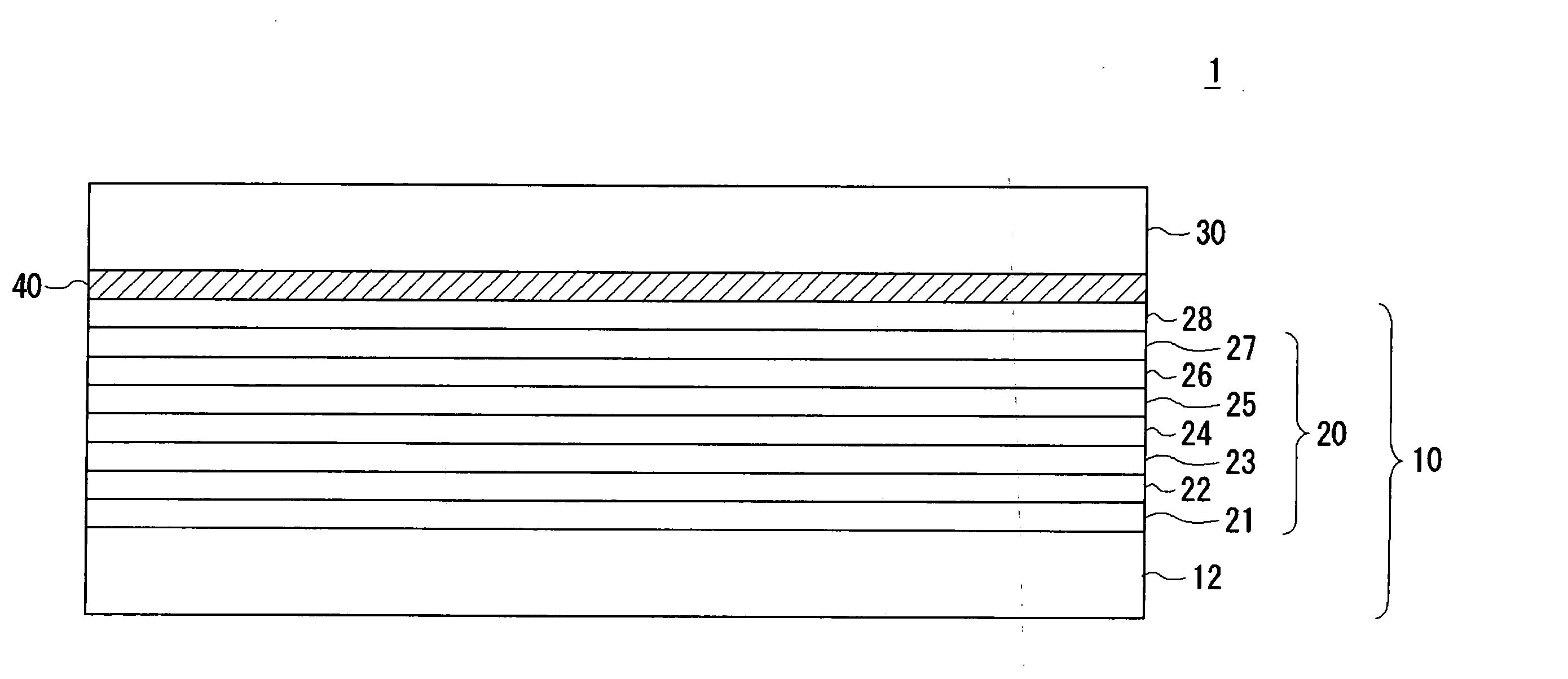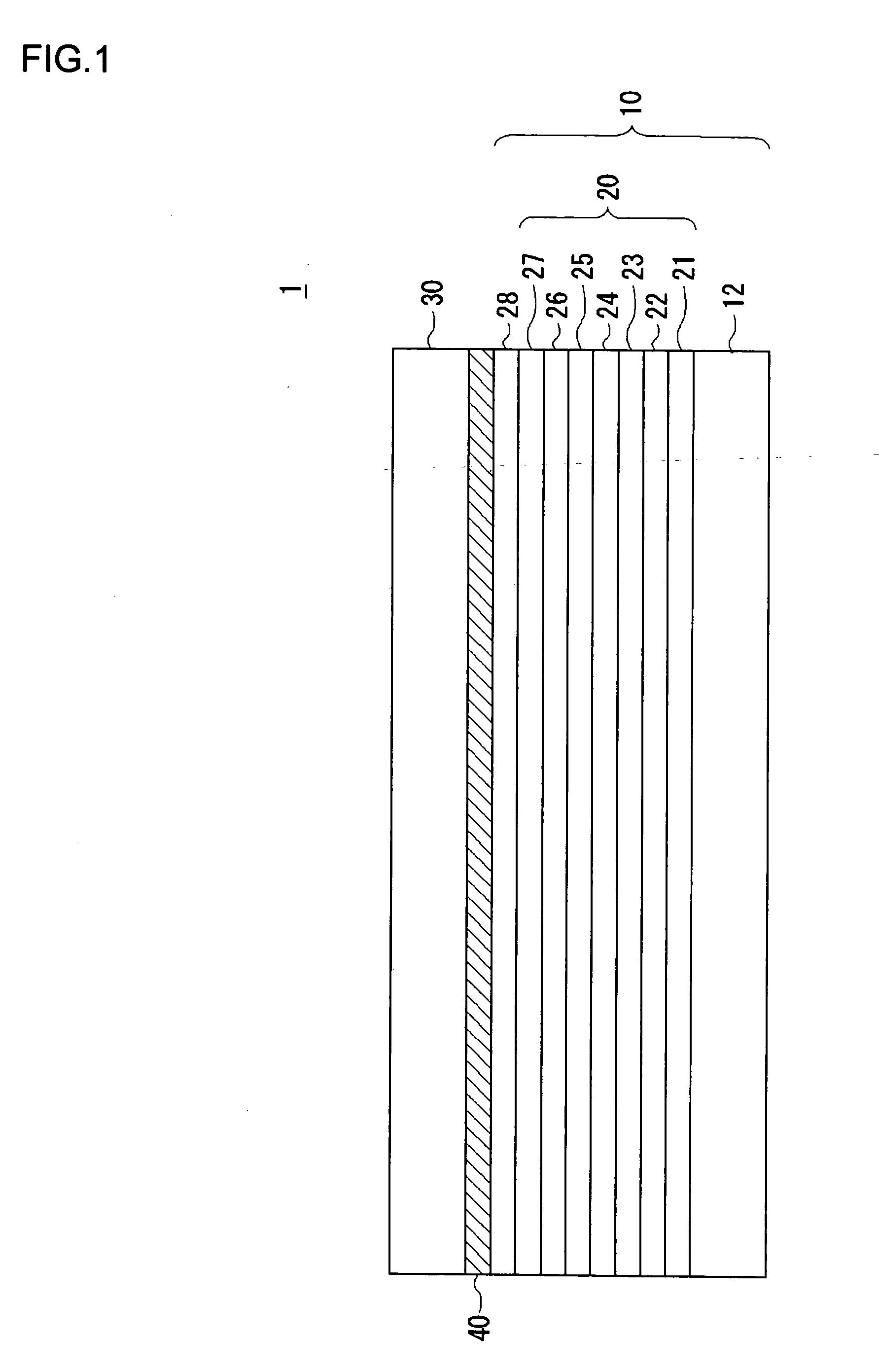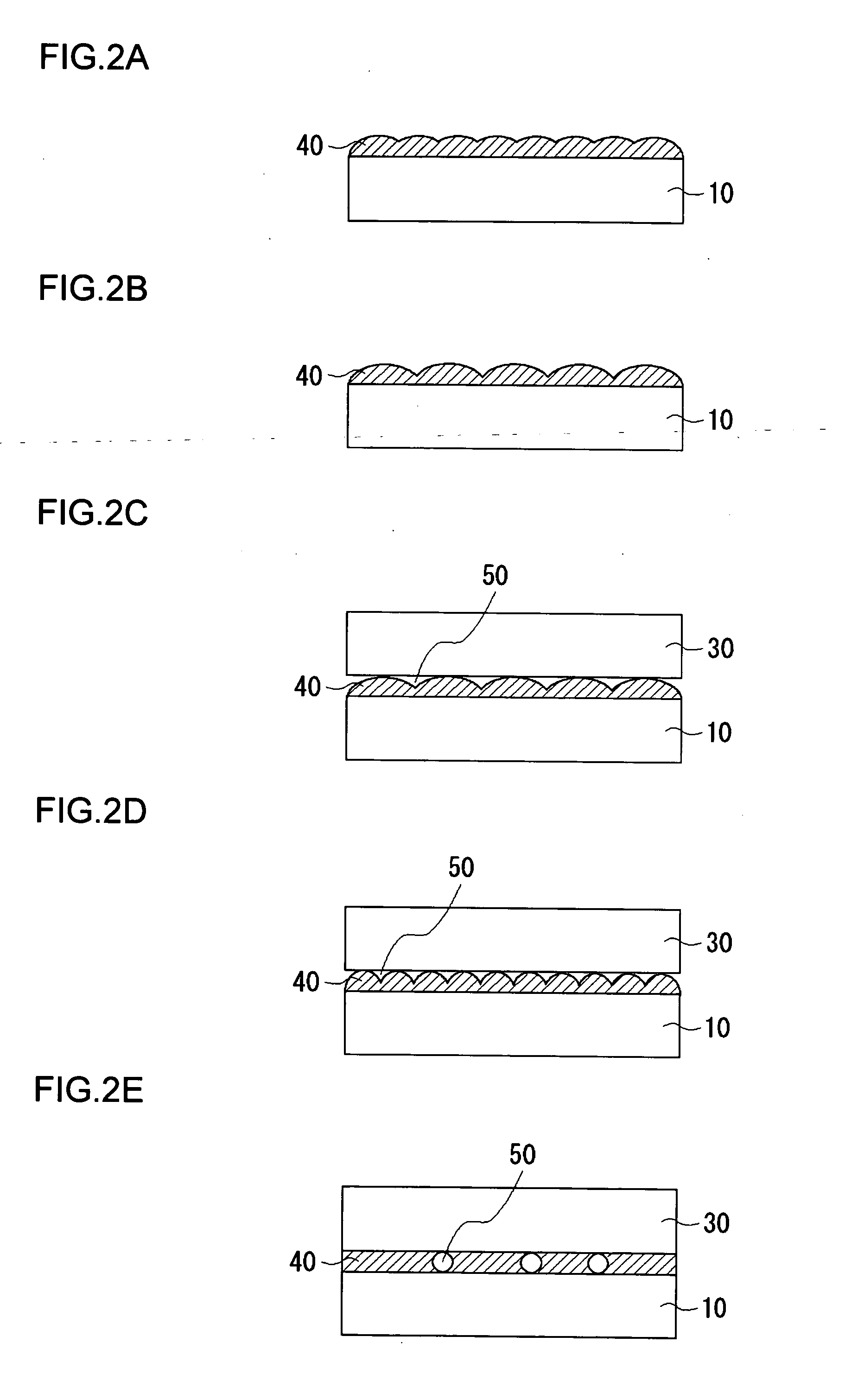Electroluminescence panel and manufacturing process therefor
a technology of electroluminescence panel and manufacturing process, which is applied in the manufacture of electrode systems, electric discharge tubes/lamps, and discharge tubes luminescent screens, etc., can solve the problems of reduced luminance, increased drive voltage, formation and growth of dark spots, etc., to improve the wettability of the substrate surface, reduce the generation of bubbles or microspaces, and eliminate microspaces quickly
- Summary
- Abstract
- Description
- Claims
- Application Information
AI Technical Summary
Benefits of technology
Problems solved by technology
Method used
Image
Examples
example 1
[0049] A protective film 28 consisting of an SiN inorganic layer was laminated on an organic EL element 20 deposited on a glass substrate 12, to prepare a device substrate 10. The device substrate 10 had a dimension of 2.2 inch (vertical)×2.2 inch (horizontal) and 220 (vertical)×176 (horizontal) pixels. Here, in a horizontal direction, three elements R, G and B are disposed per one pixel. In terms of a pixel size, a vertical longer side is 0.198 mm while a horizontal shorter side is 0.066 mm for each of R, G and B elements. The surface of the device substrate 10 was treated with plasma using argon. A contact angle was 10° or less. On the surface of the device substrate 10 was applied a UV curable epoxy resin with a viscosity of 2 Paxs by screen printing and the product was left for improving evenness. The device substrate 10 with the adhesive 40 was placed within a chamber in a vacuuming apparatus while a sealing substrate 30 without the adhesive 40 was placed on a substrate holder....
example 2
[0050] In this example, an organic EL panel 1 was manufactured as described in Example 1, except that both device substrate 10 and sealing substrate 30 were subjected to surface treatment. For the organic EL panel 1 manufactured in this example, the number of microspaces was 6 spaces with a diameter of 0.2 mm or less per a plane with 1 inch diagonal.
example 3
[0051] In this example, the procedure described in Example 1 was repeated except that in the lamination step substrates were laminated under a controlled pressure of P2 within the chamber as indicated as a solid line in FIG. 5 without surface treatment of the substrates. For the organic EL panel 1 manufactured in this example, the number of microspaces was 5 spaces with a diameter of 0.2 mm or less per a plane with 1 inch diagonal.
PUM
 Login to View More
Login to View More Abstract
Description
Claims
Application Information
 Login to View More
Login to View More - R&D
- Intellectual Property
- Life Sciences
- Materials
- Tech Scout
- Unparalleled Data Quality
- Higher Quality Content
- 60% Fewer Hallucinations
Browse by: Latest US Patents, China's latest patents, Technical Efficacy Thesaurus, Application Domain, Technology Topic, Popular Technical Reports.
© 2025 PatSnap. All rights reserved.Legal|Privacy policy|Modern Slavery Act Transparency Statement|Sitemap|About US| Contact US: help@patsnap.com



